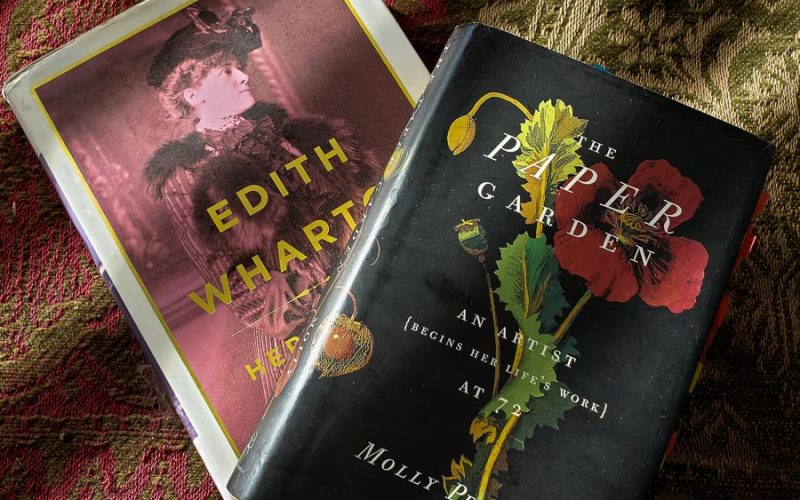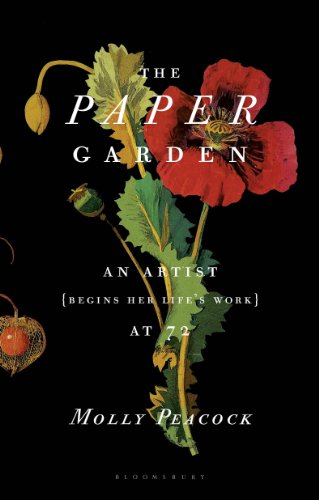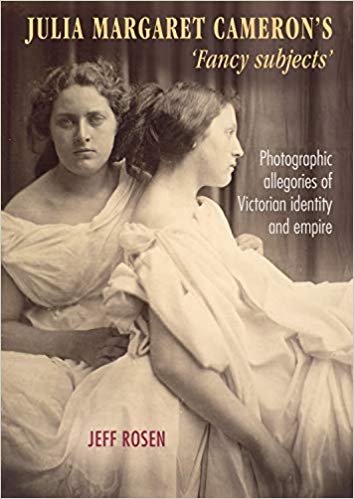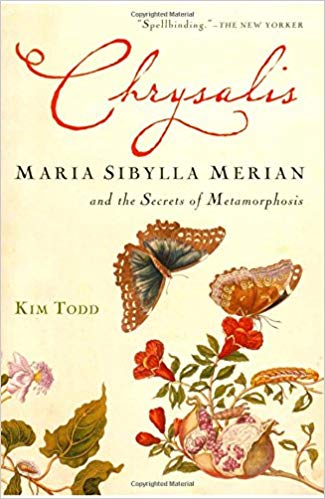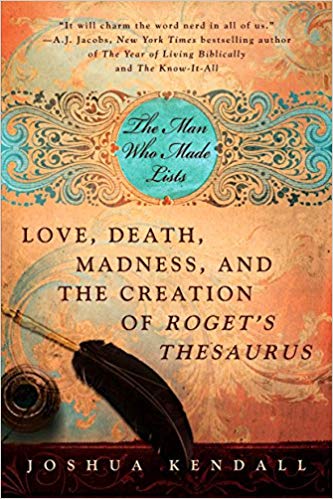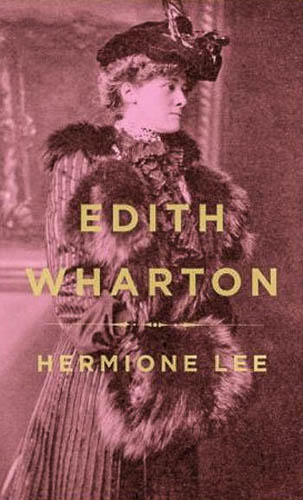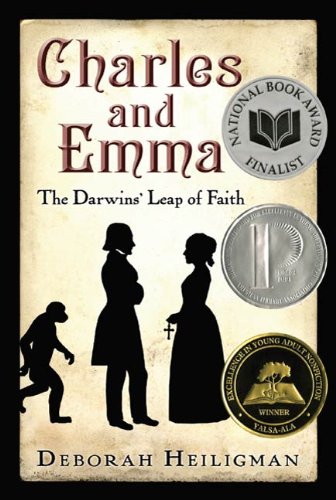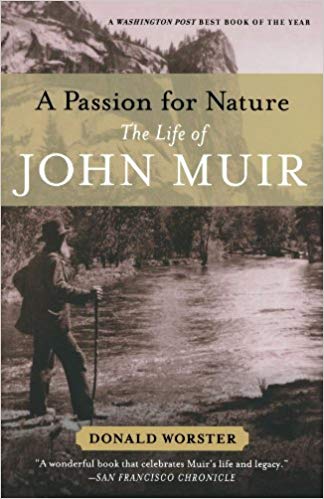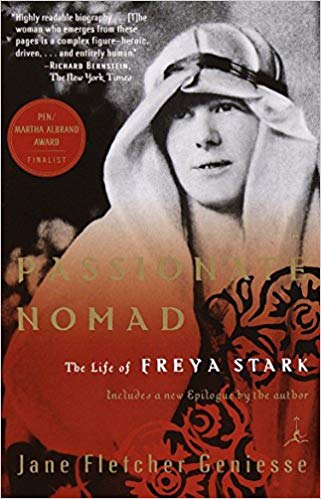I’m often asked how much research I do for these posts on creative late bloomers.
It varies. But I usually read at least one full-length biography before I start writing, which is why I don’t publish often.
One post could become a two-month project. But these deep dives revitalize me, especially when I had a day job.
(Those are a few of my research copies above. Notice the colored tabs on The Paper Garden!)
When I think about how much time I put into my posts, I’m awed by the devoted biographers who research their subjects for years, sometimes decades. I’m so indebted to them.
Here are just nine of the noteworthy biographies I’ve consulted over the years.
(I’m affiliated with Amazon, which means I’ll get a small commission on the image links below. I use it to maintain the blog and buy more books. Thanks!)
Creative Late Bloomers in Art
1. At age 17, Mary Granville Delany was married off to a ogre who died and left her penniless seven years later. At 43, she totally reinvented her life. And at 72, she created the art of mixed-media collage.
Molly Peacock’s The Paper Garden: An Artist Begins Her Life Work at 72 is a poetically personal journey through Mary’s life and art (Peacock herself is a poet).
2. At age 48, Julia Margaret Cameron taught herself to use a new and complicated invention, the camera. Her soft-focus portraits drew criticism in her lifetime, but now she is considered ahead of her time.
Julia Margaret Cameron’s ‘Fancy Subjects’ by Jeff Rosen is a fascinating study of her legacy, and how it both reflected and challenged Victorian stereotypes.
3. At age 53, Maria Sibylla Merian, sailed from The Netherlands to South America to paint the region’s insects—in a dangerous era when some people still thought butterflies were witches. Now many experts consider Maria the world’s first ecologist.
I’m currently reading Chrysalis: Maria Sibylla Merian and the Secrets of Metamorphosis by Kim Todd. It’s a page-turning blend of biography and travelogue.
Creative Late Bloomers in Writing
4. Peter Mark Roget compiled his famous Thesaurus as a tool to manage depression. (He also might have had obsessive-compulsive disorder.) He finally published it at age 74. It has never been out of print.
Joshua Kendall’s The Man Who Made Lists compassionately explores Roget’s life and work. He concludes that the Thesaurus became Roget’s salvation. It “enabled Roget to live a vibrant life in the face of overwhelming loss, anxiety, and despair.”
5. At age 43, after twenty-six rejections, Madeleine L’Engle published her iconic children’s book A Wrinkle in Time.
Becoming Madeleine is a recent biography written by L’Engle’s granddaughters. They correlate many thorny aspects of L’Engle’s life (such as her abandonment at a foreign boarding school) to her fiction.
6. Edith Wharton’s genteel upbringing did nothing to shield her from suffering. Her parents denigrated her early writing efforts. Her husband was a notorious philanderer with a penchant for barely-legal girls. She, too, suffered from various health problems.
At age 43, Edith published her first novel, The House of Mirth. At age 59, she became the first woman to win the Pulitzer at age 59 for the Age of Innocence. She died at age 75 in the French village she’d come to love, the handwritten draft of her last book upon her bed.
Hermione Lee’s Edith Wharton isn’t easy reading, but it’s deep and satisfying.
Creative Late Bloomers in Exploration
7. At age 50, Charles Darwin published On The Origins of Species, almost two decades after this famous Beagle voyages. Some scholars call this his “incredible procrastination.” But was it?
Charles and Emma: The Darwins’ Leap of Faith by Deborah Heiligman describes a Darwin few people know—a loving husband, a devoted father, and a man battling depression over his daughter’s death, his chronic ill health, and his own doubts.
It’s classified as a young adult biography, but I thoroughly enjoyed it. Heiligman conveyed Darwin’s warmth and humanity in a way conventional biographies have missed.
8. John Muir was a sawyer until, at age 29, the machine almost blinded him when the belt snapped. He vowed that if he recovered, he’d devote himself to seeing and preserving the world’s natural beauty. At 54, he founded the Sierra Club.
Donald Worster’s A Passion for Nature: The Life of John Muir explores Muir’s life in intense detail, from his early relationship with his abusive father to the enduring legacy of his unwavering devotion to nature.
9. Freya Stark also suffered a disfiguring accident. At age 13, some of her hair was caught in a weaving machine and torn from her forehead. During her recovery, she read 19th-century travelogues and dreamed of exploring unknown lands away from prying eyes.
Passionate Nomad: The Life of Freya Stark recounts how Freya succeeded, starting at age 37 when she became the first European woman to explore Iran’s Valley of the Assassins. She died at age 100 after an extraordinary life.
What Do These Later Bloomers Have in Common?
No one highlighted here walked an easy path. Each person faced tragedy or adversity that delayed their heart’s journey.
But they finally found their way. These nine biographies celebrate the power of creativity and resilience. It’s truly never too late!
